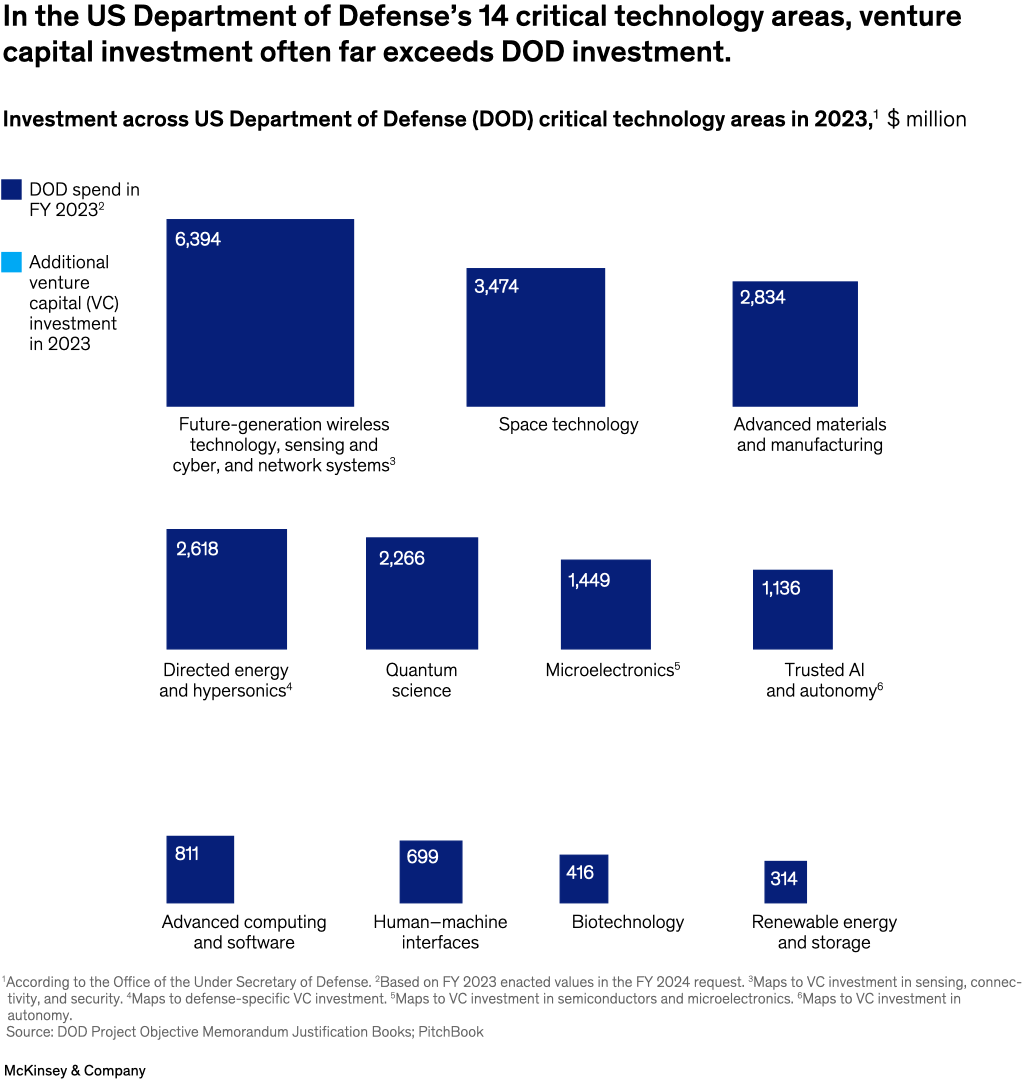In the 1950s and 1960s, the US government accounted for nearly 70 percent of global R&D spending. Over the past several decades, however, the private sector has replaced the US government as the driving force behind R&D, accounting for 73 percent of overall R&D spending in 2020. Partner Matt Waters and coauthors show that venture capital investment in 2023 was equivalent to about 450 percent of Department of Defense investment in advanced computing and software and about 800 percent of the department’s investment in biotechnology.

Image description:
A series of 11 proportional area charts showing the 2023 investment in 11 of the 14 critical technology areas of the US Department of Defense (DOD), measured in millions of dollars. Each chart is split into two squares representing direct DOD spend in fiscal year 2023 and additional venture capital (VC) investment in 2023. Additional VC investment exceeded DOD investment in six of the 11 areas displayed: space technology, trusted AI and autonomy, advanced computing and software, human–machine interfaces, biotechnology, and renewable energy and storage. For example, VC funding for biotechnology was $3,317 million compared with $416 million of DOD spending. The highest DOD funding was in future-generation wireless technology, sensing and cyber, and network systems, at $6,394 million, and the lowest DOD funding was in renewable energy and storage, at $314 million.
Data sources: DOD Project Objective Memorandum Justification Books; PitchBook.
End of image description.
To read the article, see “Evolving federal R&D to meet the challenges of tomorrow,” April 26, 2024.